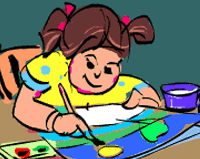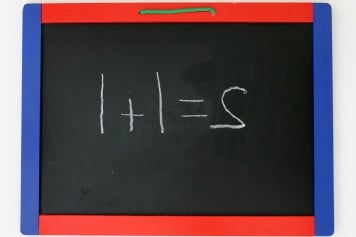
Creativity and Education [Illustration by Shiju George]
Written by Devi Prasad
Published by National Book Trust, New Delhi
Educationist and artist, Devi Prasad graduated from Rabindranath Tagore’s school at Santiniketan. A non-violent activist, he joined the War Resisters’ International, London, as its Secretary General and later Chairman. He has taught at various universities including Viswa Bharati. He was also the editor of the journal Nayee Talim for several years.
Based on the author’s experience with children and teachers as a teacher of art at the Nayee Talim Educational Institute, Gadhiji’s ashram at Sevagram, the book is a pioneering study enunciating the essentiality of art as the basis of education.
An excerpt from the book
The artist is not a special kind of man but every man is a special kind of artist.
I had my primary education in a school which was a typical example of one of the most anti-education educational systems created by colonial rule in nineteenth century India.
The most vivid memory I have of that period is that for some reason or another, or perhaps for no reason at all, our teachers never hesitated to give us corporal punishment, which made us hate the school. There was nothing in the school that could create in us an interest in any subject or activity. I do not remember enjoying even a moment of my time in it.
Later, I was moved to the primary section of an intermediate college founded on the Aryasamaj ideals. Luckily, this school had a carpentry class as an extracurricular activity.
The family moved to a new house situated in open and better surroundings. The new place was partly renovated before we moved in and partly afterwards. I was almost nine at the time and was fascinated by the work the craftsmen were doing.
Both the head mason and the carpenter, were very good craftsmen and tolerant people. They did not mind my sitting and watching them work and meddling with their tools.
This experience was enough for me to take an interest in carpentry at school. So much so, that I gradually collected enough tools of my own, bought with my pocket money, to be able to make things for the house.
I also became interested in keeping the wood work of the house-especially the doors and windows-clean and well painted. Later I even became interested in drawing and painting, a subject which I took for my college education after finishing school.
In spite of a boring, nay hateful, primary education I think I had a more or less happy childhood although I was not conscious of it at the time. It only became clear to me, during my student days in the art college at Santiniketan, when I saw the happy faces of the ashram school-children and later when I did my teaching/research work as a part of the educational scheme initiated and guided by Gandhiji in Sevagram.
I realized that if during my childhood I had not had the opportunity to “meddle” with the tools and the raw materials of the craftsmen who renovated our house, I would not have developed the taste for “making things!” Without this experience would I have understood children’s nature, as I think I did in later life, I often wonder!
The principles of education worked out by Tagore had totally rejected the notion and practice of teaching based on textbooks. For Tagore, education was a process of learning rather than a mechanical method of thrusting information into, what are supposed to be, the empty minds of children and adults.
According to Tagore, the best textbook is life itself, and nature, of which we are an integral part; so also our cultural heritage and its significance in the ongoing processes of our lives. To put it in a nutshell, there are three centres of education: mother-tongue, nature and creative activities.
The system of education the colonial rulers had developed in India not only ignored these elements, it totally ruled out their place in the processes of education at all levels.
Very few artists can be teachers, and fewer still can be really good art teachers, particularly for children. Based on my own observation I have found that art teachers-artists trained in art schools-generally speaking, tend to impose their own notions and forms on children. They try to “teach” rather than create the required atmosphere for children to express themselves through line and colour, clay or wood, etc.
After years of experience I have come to the conclusion that for children under ten or twelve years of age, a teacher who is not an artist but who understands children, and the beauty and nature of their art, can be a better art teacher than one who may be a good artist but does not understand the child.
A teacher who is able to give proper guidance to children upto the age of ten or eleven is more likely to be a good teacher of art. So also for children into the beginning of their adolescence.
I have seen teachers who did not possess even the minimum skill of drawing but who had knowledge of child-art, who appreciated and enjoyed it, and who fully identified themselves with the needs of children, being very good art teachers for children. Only such teachers can nurture the creative spirit and artistic talents of children.
The point to note here is that at that stage the question of teaching techniques or special skills does not arise. What children need from the teacher is encouragement, proper material, class management and companionship.
If such a teacher happens to be a good artist it will surely be an asset, but it is a rare thing to happen. Moreover it is not that essential.
Milking cow, a painting by a 13-year-old girl. Although she was thirteen, her mental age was not more than 10-11 years. However, when she took to drawing and painting, her growth became faster, and eventually she became the most admired child artist of the Sevagram community.
While our educators have continued to impose their ideas on children, in other countries significant changes have taken place in the educational world over the past several decades. New experiments have been conducted to explore the world and needs of childhood.
The German founder of kindergarten educational of reformer, Wilhelm August Froebel showed that freedom is a very important element in the education of the child. Some others demonstrated that strict discipline was harmful for the creativity of children.
The work of these psychologists was important historically, but the work done by an Austrian artist named Franz Cizek was revolutionary in the field of children’s creativity in practical terms.
Despite emphasizing the importance and need for freedom for the development of the child’s personality most psychologists often impose their own ideas on children. Cizek, on the other hand, has protected the child from adult dominated.
He said: “I have liberated the child. Previous to me children were punished and scolded for scribbling and drawing. I have saved them from this treatment. I said to them: What you do is good. And I gave mankind something which until I came had been spurned. I have shown parents the creative power of children. Formerly parents and teachers suppressed the best things in children. But I have done all that not from the point of new of the pedagogue, but as a human being as artist. Such things are not achieved from pedagogy, but from the artistic and human or from human artisticness.” (Emphasis is mine)
Despite many hindrances and criticisms, Cizek maintained his respect and love for the child. So much so, he said something that had never been heard before: “The most beautiful things in the creation of the child are his ‘mistakes’. The more a child’s work is full of these individual mistakes the more wonderful it is. And the more a teacher removes them from the child’s work the duller, more desolate and impersonal it becomes.”
This I feel is really revolutionary and a genuine recognition of freedom, the freedom that allows the individual to grow on the basis of his psychological character and need.
The Children’s Angle
The most beautiful things in the creations of the child are his mistakes. The more a child’s work is full of these individual mistakes the more wonderful it is. And the more a teacher removes them from the child’s work the duller, more desolate and impersonal it becomes.
It is neither sufficient nor justified to consider only the adult’s approach in planning educational programmes for children, for the one who is at the receiving end is not an adult.
Hence, for good educational planning it is also essential to take it into account. The child’s approach does not give consideration to the end result of anything that he does or likes to do unless he has experienced its results first hand.
Unlike the adult, the child does not have any value system governing his thinking and action. If there is anything a child considers desirable it is based on the elements of joy, satisfaction, accomplishment, recognition, and the argument behind the question: If you can do it, why can’t I?
There is yet another element that plays an important role in this respect. It is the wish to be like adults, not in every respect, but in selective matters, such as those which will allow their spirit of adventure to be satisfied.
Children are looking for new experiences all the time, and want to examine and put everything to test that attracts their eyes or feelings. If they like the experience, they want to repeat it until something new seems to be interesting or challenging. Things that the child gets attracted to are often those which the adults either do not see or are not interested in.
In short, there are two different worlds-one is that of the adult and the other of the child. The subjects and methodologies of these worlds seem also to be different.
It is not that the adult is unable to see the things in which the child gets interested. The point to note here is that an item may be the same but its function, even its form and the angle from which it is viewed, will be different from the child’s point of view.
An illustration may be useful in explaining what I mean by there being two different worlds. Once I was reading a book in the light of a kerosene lamp, the only source of light available after sunset in Sevagram those days. My son, then only two, was sitting near me. Suddenly the light blew off causing some annoyance to me, but the child enjoyed it and laughed heartily.
The object involved and the happenings were the same for both of us, but their effects were different: one was of annoyance and the other of fun.
Dramatic Aspect
In one of my art classes, a boy almost twelve years of age, made a painting on a theme entitled: A Rainy Day. The picture depicted a boy with an umbrella walking towards a bullock tied to a tree a few yards away.
All of a sudden he slipped, fell down and his umbrella flew and fell at some distance away from him. This young artist took a couple of periods to complete the painting.
A Rainy Day is a painting by a 12-year-old boy. The day he was giving the finishing touches to the painting he took it, kept it a few yards away from his seat, and walked backwards, looking at it with some kind of dramatic movements representing the situation of the boy in the picture.
Neither he nor any other child in the class knew that I was watching him all the time. He was totally engrossed in the theme of the picture and actually playing the role of the “boy with the umbrella”. He literally acted several times the slipping and falling down as the boy in the picture.
He was, in fact, experiencing the drama of the picture within himself with great intensity and, I suppose, also satisfaction. He was not acting the scene to show it to others. In fact, none of his classmates notices him when he was acting out the scene.
On another occasion, a child of the younger group made a drawing of a motor car. While making the drawing of the vehicle, every now and then he acted as if his hands were on the steering wheel and he was driving it, occasionally hooting to mimic the sound of the horn. Looking at this aspect of children’s art activity I realized that they, like a great artists, identify themselves, physically as well as mentally, with the object they draw or model.
Imagery
Children are versatile in their imagination and they spend much time in imagining all kinds of things, specially related to the stories they hear from their parents or other elders and the experience they gather in their lives.
For instance, while playing with a heap of sand a child makes a hole in it, and it becomes a house or, a palace, and the heap of sand a mountain. A few twigs inserted in the sand become a forest, armies, crowds of men and women, motor cars or what have you.
‘When I Fell into the Well’: A painting by a 13 year old boy.
While drawing water from the well one day, this child actually fell into it. “How did you feel?” his classmate asked him. The next day he wrote an essay on his experience, entirely on his own. He painted this picture, with his falling body in blue colour, which must be due to the terrifying experience he went through at that time.
Drawings made by children during their early years look like scribblings to adults, but for them they can be people, the sun, moon, houses, or anything that they have in their mind at a given time.
Stages of Children’s Art Expression
Generally speaking, children pass through the following stages in their art expression:
Two to four years
Scribbling and getting familiar with tools and material. Use of hands and muscular movements.
Four to six years
Stage of symbols and naming the drawings.
Seven to eight years
Getting away from infantile stage. Beginning of visual realism.
Nine to eleven years
Stage of disillusionment and discouragement.
Eleven to fourteen years
Early adolescence and confusion.
Fourteen years and after
Possibility of the stage of artistic revival.
Most children go through the above stages of development. It is difficult to assign specific age groups for these stages. We shall discuss this aspect when we go into each stage in some detail. The time of transition from one stage to the other depends on each child’s nature and pace of growth.
It is also difficult to say how long a child continues to remain in each of these stages. It was noticed that some children passed through the first in a matter of weeks, but others took months. It has to be remembered that in general, these stages are not static, as children go on moving from one experience to another, thus grow continuously.
These stages are not clear cut periods in themselves, they overlap with each other. Sometimes, you may be surprised to see a child move on to the next stage all of a sudden!
I also learnt that the evolution of children’s drawings is of the same nature and almost identical all over the world, and that children do not draw what they see but what they know. These observations clearly point to the fact that art activities can become creative and pleasant for children.
Scribbling Stage
As soon as a child is able to hold a pencil it starts scratching it on any available surface. If it is paper or a surface on which the pencil marks can be made, children like scribbling on it. The scribblings do not represent anything in particular. It is the child’s effort to make acquaintance with the material and at the same time to make bodily movements.
Children also like to feel that they are doing what their parents or another adults do. Sometimes, when asked what he has drawn the child will thank and call it something on the spur of the moment. Generally the human figure is the favourite.
Stage of Symbols
This stage comes when the child has had enough of scribbling without having anything in mind about what the scribbles represent. He has already started giving names to his drawings. Now he begins to associate his drawings with objects from the world outside his own self, objects which he familiar with. They have no likeness with the object but the child says it does. He creates symbols in his mind.
These symbols have no long term relevance, for the same drawing can become different things at different times. In due course, these symbols acquire some kind of permanency.
For instance, a circular shape with two smaller circles in the top half and one in the bottom half is a human face. The same round shape can be papa, mama or any one else, depending on the occasion. The artist is totally subjective in his experiences as well as expressions.
Stage of Visual Realism
Gradually these symbols change. The change is caused by new experiences. Children go on noticing new aspects of the same thing, which influences the form and even style of the symbol.
For instance, at first a human face was a large circle with two smaller circles, representing the two eyes. Then the mouth comes into the picture and then perhaps the nose. The mouth and the nose may be only two tiny lines-on horizontal and the other vertical. In due course the ears, hair, neck etc. are also seen.
With the development of objectivity in their visual observation, these symbols start looking somewhat “realistic”. The more children start seeing in that manner the more they begin to compare the drawings with the objects themselves. The kind of change in drawings with the object themselves. The kind of change in their faculty of looking at the outer world brings a “realistic” approach into their drawings.
There is probably another reason behind this change. Until now the child was an introvert. Everything that he saw or experienced was interpreted with subjectivity. Now he has started to experience objectivity. His world now is becoming more intricate and he is able to establish some relationship with the world around. In other words, he gets out of himself. His pictures show the signs of realism.
An individual’s qualities and capacities are not sufficient requirements for deciding the way his or her growth should take place. Social and environmental factors play a crucial role in dictating the ways and goals of human growth.
Stage of Disillusionment
Children try to do everything in the way their elders do. It is not that they feel they are also adults, but that they want to be as good as their elders in work.
In the case of art activities they remain themselves as long as they have not started looking at the world more objectively. Awareness of the outside world makes an impact on their motivation and the ways of self-expression.
At this stage, most children do not feel the same encouragement as they did during their earlier stage of art expression. Now they expect themselves to be able to draw like adults.
It should be pointed out that this kind of comparison could not have taken place in the older pattern of life in India, or for that matter in many parts of the world. For instance, the gap between the art of folk traditions and that of the children could not have been so wide as to create a spirit of comparison in the minds of children.
But the popular standards of taste and design, today, are such that if children follow them as their model, the direction of their growth would entirely change and their development become distorted.
In the absence of an atmosphere sympathetic to their nature and correct growth requirements, the journey in the direction of their goal, i.e. the imitation of popular taste, examples of which they see all around them, makes children feel frustrated and gives them a sense of defeatism. This is what I call the stage, when the child wants to do something that will be accepted by the adults. In other words, he does it for others and not for himself; just the opposite of what he was doing until now.










